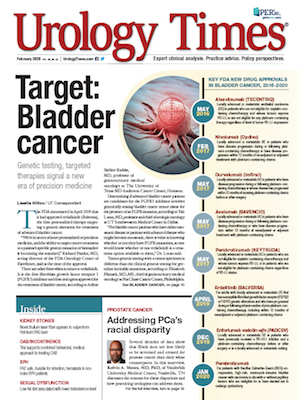Publication
Article
Urology Times Journal
Lack of emergent VCUG leads to costly settlement
Author(s):
"Following an adverse liability verdict, this defendant urologist did not also want the jury deciding damages," writes Acacia Brush Perko, Esq.
BillionPhotos.com - stock.adobe.com


Several weeks before his birth, it appeared that “J.D.” suffered from antenatal hydronephrosis. His mother was induced to deliver the child at 36 weeks. J.D. had an Apgar score of 9/9 at the time of his birth.
Thereafter, a pediatrician saw the child, examined him, and requested a neonatology consult for the next day. That pediatrician went away for the weekend and turned J.D.’s care over to another pediatrician. A neonatologist examined him the following day, ordered an ultrasound with a notation that the result of the ultrasound should determine the course of action, and noted that a pediatric urologist should be consulted. The day after birth, an ultrasound confirmed that J.D. suffered from bilateral moderate to severe hydronephrosis.
Following this diagnosis, the pediatrician discharged the child 2 days after birth with instructions to see a pediatric urologist, without ordering a voiding cystourethrogram (VCUG) to determine the cause of the hydronephrosis. The day after discharge, J.D. was examined by a urologist who performed an ultrasound and released the child home with instructions to call and schedule the VCUG for the following week. After the visit with the urologist, J.D. developed jaundice that required in-home bilirubin lights.
VCUG reveals Grade IV reflux
J.D.’s mother called and scheduled the VCUG as instructed, and the procedure was set just 7 days after birth. On the day of the surgery, the mother brought J.D. to the hospital for the procedure. The VCUG revealed Grade IV reflux. J.D. was immediately hospitalized, suffering from urinary tract infection, sepsis, and Escherichia coli meningitis. As a result, J.D. suffered mild mental retardation.
Also by Acacia Brush Perko, Esq.: Is clinician at fault for vesicovaginal fistula?
J.D.’s mother brought suit against all the involved pediatricians, the neonatologist, and the urologist, alleging that they were negligent in failing to properly treat her son who was diagnosed with antenatal hydronephrosis prior to birth. The plaintiff alleged that the physicians fell below the standard of care by failing to order a VCUG before discharge (pediatricians and neonatologist) or on an emergent basis (urologist), and failing to order any antibiotics to keep J.D.’s urine sterile pending a diagnosis of his condition (all defendants). All defendants denied liability.
The defendant pediatricians contended that J.D.’s condition was consistent with mild jaundice due to prematurity and that they acted within the standard of care by referring the child to a pediatric urologist and neonatologist. The neonatologist contended that he was called to consult solely for the purpose of ordering the ultrasound and that was the extent of his involvement with the infant.
The defendant urologist claimed that there was no deviation from the standard of care. He maintained that he observed J.D.’s urine during examination and had no reason to order the VCUG test on an emergent basis since the child was voiding. The defendant urologist also argued that at the time of the care, there was no standard of care that required the dispensation of prophylactic antibiotics under these circumstances and consequently there was not negligence on his part.
Next: Matter proceeded to trial against urologist onlyMatter proceeded to trial against urologist only
Prior to trial, the neonatologist settled with the plaintiff for $100,000. The hospital that was sued on a respondent superior theory settled prior to trial for the sum of $50,000. The remaining defendants (the two pediatricians and the urologist) participated unsuccessfully in mediation. They made a joint offer of $1,500,000 at mediation. The plaintiff accepted the $500,000 offers from the two pediatricians and rejected the $500,000 offer from the urologist. The matter proceeded to trial against the urologist only.
Read: Lack of follow-up on x-ray leads to lawsuit
The plaintiff petitioned the court for separate jury trials on the issues of liability and damages. This request was granted by the court. The trial on liability lasted 10 days. After 3 hours’ deliberation, the jury returned a verdict in the plaintiff’s favor, finding that the defendant urologist fell below the standard of care and proximately caused J.D.’s injury. The issue of damages was next to be tried. Prior to the damages trial, the defendant urologist agreed to settle for $3,200,000.
LEGAL PERSPECTIVE: The facts involving a young mentally retarded child may have resulted in a staggering damage award. Following an adverse liability verdict, this defendant urologist did not also want the jury deciding damages. As you may know from reading these columns, a plaintiff in a medical negligence action must prove both liability and damages. In this case, the trial was bifurcated, meaning the issue of liability was separated from the issue of damages. The jury’s return verdict on liability altered the landscape for the defendant urologist, who may have been more confident in his position prior to trial.
































